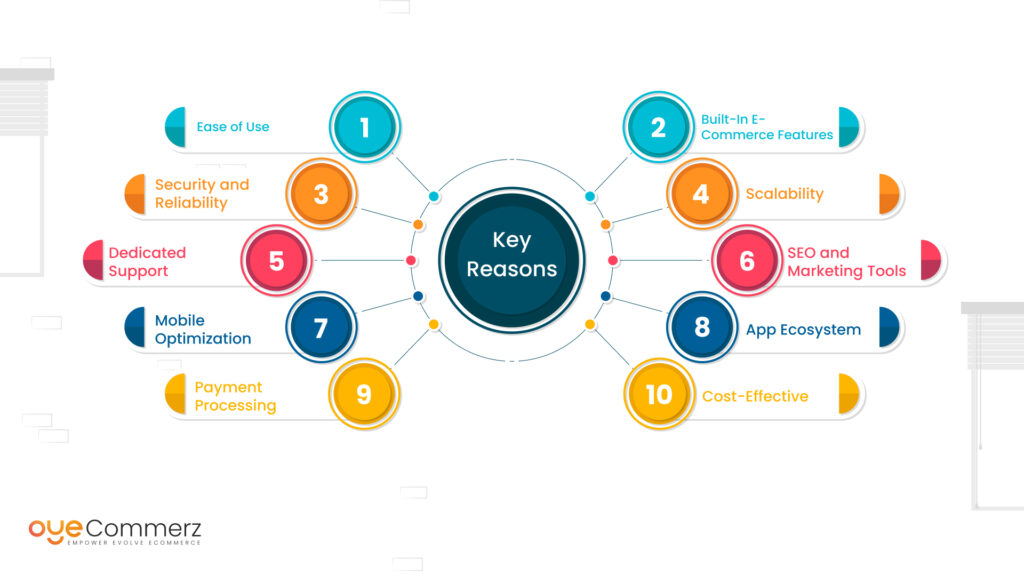Transitioning from WordPress to Shopify marks an exciting step in optimizing your online store processes. As businesses expand, selecting a solution that supports scalability, user experience, and customization becomes crucial. Shopify is widely recognized as a favorite for e-commerce professionals, offering superior flexibility, data protection, and ease of use. In this guide, we’ll explore why this migration is a game-changer, highlight the advantages, and provide practical tips to ensure a seamless move.
1. Top Reasons to Transition from WordPress to Shopify
The combination of WordPress and WooCommerce, has served countless e-commerce platforms. However, as companies scale, issues like reliance on plugins, security vulnerabilities, and complex setups can hinder progress. Shopify, designed explicitly for digital retail, eliminates these issues with an comprehensive, user-friendly platform. Real data back this shift—Shopify hosts over 4.4 million websites worldwide, with a documented 10% increase in sales conversion rates for many businesses after migration.
2. Key Benefits of Shopify for E-commerce Success
Shopify’s powerful platform caters for expanding brands. Its standout features include:
- Effortless Design Flexibility: Shopify offers over 80 professionally designed themes.
- Built-in Features: Features like Shopify Payments and integrated SEO save time and effort.
- Global Reach: Currency versatility and localization features enable brands to expand internationally.
Additionally, Shopify delivers an availability percentage of 99.98%, ensuring your store remains accessible.
3. Getting Ready for Your WordPress-to-Shopify Transition
Prior to starting the migration process, assess your current store. Analyze product data, client information, and search engine rankings. Resources such as Shopify’s Migration Kit or external tools help ease the transition. Create a comprehensive plan, ensuring all resources—item details, media files, and blog content—are ready for seamless import.
4. The Importance of Accurate Data Migration
Transferring your data is a cornerstone of a successful platform switch. When migrating from WP to Shopify, prioritize:
- Product Information: SKU, item summaries, and categories.
- Client Information: Emails, purchase records, and preferences.
- Search Engine Considerations: Retain meta tags, URLs, and redirects to maintain search rankings.
Leverage apps like LitExtension to facilitate seamless migration while reducing mistakes.
5. Tailoring Your Shopify Store to Fit Your Brand
After the move, customizing your Shopify store helps it reflects your business identity. Take advantage of Shopify’s intuitive page builder to create layouts with ease. Shopify's templates are mobile-responsive, ensuring a seamless UX across devices—a key point, since 74% of e-commerce traffic is generated by mobile users.
6. How to Protect Your SEO Rankings When Switching Platforms
SEO is vital for preserving your visibility during migration. Shopify excels in SEO with clean URL structures, built-in optimization tools, and smooth content management. Make sure you:
- Implement 301 redirects for existing links.
- Enhance updated content with targeted phrases.
- Use Shopify's apps Plug in SEO to track analytics post-migration.
7. Essential Tests After Migrating to Shopify
Once the migration is complete, conduct thorough testing.
Review: - Page load times (Shopify delivers faster speeds compared to WP).
- Functionality of payment gateways and transaction flow.
- Mobile responsiveness.
Quality assurance guarantees your store provides Shopify migration tools a smooth shopping experience from the start.
8. Real-Life Success Story
An example of effective platform switching is Gymshark, a fitness apparel brand that moved to Shopify. After the switch, the company experienced a 60% increase in mobile sales and significantly lowered site downtime. This highlights the capabilities of Shopify in driving e-commerce growth.
9. Challenges and Solutions
Migration is not without obstacles, such as information accuracy and adjusting tailored features. However, Shopify’s extensive assistance and third-party experts make overcoming these hurdles manageable. Collaborating with qualified Shopify developers helps guarantee a trouble-free transition.
10. Making the Switch: The First Step Toward Success
Migrating from WordPress to Shopify represents a forward-thinking approach to e-commerce. By focusing on growth, streamlining operations, and improving buyer satisfaction, Shopify enables companies to succeed in competitive markets.
Conclusion
Transitioning from WP to Shopify is a strategic move that can greatly enhance your online business performance. With a robust migration plan, the appropriate resources, and professional guidance, you can achieve new growth Shopify setup and customization opportunities.
Ready to make the leap? Let’s discuss how our Shopify migration services can transform your e-commerce platform. Contact us now, or consider: Is it time to seize Shopify’s advantages for your store?
